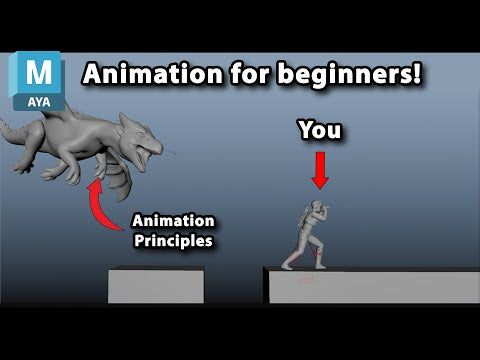Your Cart is Empty
Customer Testimonials
-
"Great customer service. The folks at Novedge were super helpful in navigating a somewhat complicated order including software upgrades and serial numbers in various stages of inactivity. They were friendly and helpful throughout the process.."
Ruben Ruckmark
"Quick & very helpful. We have been using Novedge for years and are very happy with their quick service when we need to make a purchase and excellent support resolving any issues."
Will Woodson
"Scott is the best. He reminds me about subscriptions dates, guides me in the correct direction for updates. He always responds promptly to me. He is literally the reason I continue to work with Novedge and will do so in the future."
Edward Mchugh
"Calvin Lok is “the man”. After my purchase of Sketchup 2021, he called me and provided step-by-step instructions to ease me through difficulties I was having with the setup of my new software."
Mike Borzage
Design Software History: Siemens' Transformative Role in the Evolution of Design Software and Industrial Innovation
August 13, 2024 5 min read


Introduction to Siemens and Its Role in Design Software
Siemens AG is a global powerhouse in electronics and electrical engineering, with a rich history dating back to its founding in 1847 by Werner von Siemens. Over the decades, Siemens has diversified its operations, becoming a key player in industries such as energy, healthcare, infrastructure, and manufacturing. The company's core business areas include automation, digitalization, and smart infrastructure, making it a leader in industrial technology.
Siemens' journey into the software industry began as a natural extension of its hardware capabilities. Recognizing the growing importance of software in enhancing product performance and efficiency, Siemens has invested significantly in developing and integrating advanced software solutions. This strategic move has positioned Siemens at the forefront of the design software landscape, enabling industries to leverage cutting-edge tools for innovation and productivity.
Siemens' contributions to the evolution of design software are profound. The company has developed a suite of software solutions that cater to various sectors, driving advancements in aerospace, automotive, healthcare, and manufacturing. By fostering a philosophy centered on innovation and continuous improvement, Siemens has consistently pushed the boundaries of what design software can achieve.
Key Milestones in Siemens’ Design Software Development
Early Initiatives and Breakthroughs
Siemens' initial forays into software development were marked by efforts to integrate software capabilities with its existing hardware products. This approach allowed Siemens to create comprehensive solutions that could address complex engineering challenges. Early breakthroughs included the development of software tools for automation and process control, laying the groundwork for more sophisticated design software.
Acquisition of Key Companies and Technologies
A pivotal strategy in Siemens' software evolution has been the acquisition of key companies and technologies. Notable acquisitions include:
- UGS Corp - Acquired in 2007, UGS brought a wealth of expertise in product lifecycle management (PLM) software, including the highly regarded NX and Teamcenter products.
- Mentor Graphics - Acquired in 2017, Mentor Graphics added electronic design automation (EDA) capabilities, significantly enhancing Siemens' software offerings for the electronics industry.
These acquisitions have significantly bolstered Siemens' software capabilities, enabling the development of integrated solutions that span mechanical, electrical, and electronic domains. By incorporating the strengths of these acquired companies, Siemens has been able to offer a more cohesive and powerful suite of design tools.
Major Software Releases and Their Impact
Siemens has introduced several groundbreaking software products that have had a lasting impact on various industries. Some notable releases include:
- NX - A comprehensive CAD/CAM/CAE software suite that supports product design, engineering analysis, and manufacturing. NX is renowned for its advanced simulation capabilities and seamless integration across the product development lifecycle.
- Teamcenter - A leading PLM software that facilitates collaborative product development, from initial concept to production and maintenance. Teamcenter's robust data management and process automation features have made it a staple in industries such as automotive and aerospace.
- Solid Edge - A versatile CAD software known for its synchronous technology, which combines the speed and simplicity of direct modeling with the flexibility and control of parametric design. Solid Edge is widely used for mechanical design and product development.
Each of these software products has introduced innovative features that have transformed design processes and enhanced productivity. For instance, NX's advanced simulation tools have enabled engineers to conduct complex analyses with greater accuracy, reducing the need for physical prototypes and shortening development cycles. Similarly, Teamcenter's collaborative platform has improved data sharing and communication across global teams, fostering more efficient and streamlined workflows.
Siemens’ Software Contributions Across Industries
Aerospace and Automotive Sectors
Siemens' software solutions have had a profound impact on the aerospace and automotive industries. By providing advanced tools for product design, simulation, and lifecycle management, Siemens has enabled these sectors to innovate and improve their design processes. Examples of major projects and collaborations highlight how Siemens' software has facilitated the development of cutting-edge technologies and products.
In the aerospace sector, Siemens' software has been instrumental in designing and analyzing complex systems such as aircraft structures, propulsion systems, and avionics. The ability to simulate real-world conditions and optimize designs before production has significantly reduced development costs and time-to-market.
Similarly, in the automotive industry, Siemens' software has supported the design and development of next-generation vehicles. From electric powertrains to autonomous driving systems, Siemens' tools have enabled engineers to create innovative solutions that meet stringent performance and safety standards.
Healthcare and Medical Devices
Siemens' contributions to the healthcare sector are equally noteworthy. The company's software tools for medical imaging, diagnostics, and device design have revolutionized the way medical devices are developed and utilized. Siemens' software solutions have played a crucial role in improving patient care and advancing medical technologies.
For instance, Siemens' imaging software has enhanced the quality and accuracy of diagnostic imaging, enabling healthcare professionals to make more informed decisions. Additionally, Siemens' design software has facilitated the development of advanced medical devices, such as imaging equipment, surgical instruments, and implantable devices.
Manufacturing and Industrial Automation
Siemens' influence extends to the manufacturing and industrial automation sectors, where its software solutions have driven significant advancements in efficiency and innovation. Key contributions include the development of digital twins, smart manufacturing, and IoT integration.
Digital twins, which are virtual replicas of physical assets, allow manufacturers to simulate and optimize production processes in real-time. Siemens' digital twin technology has enabled companies to reduce downtime, improve product quality, and enhance operational efficiency.
Moreover, Siemens' smart manufacturing solutions leverage IoT and data analytics to create connected and intelligent production environments. These solutions have enabled manufacturers to monitor and control production processes with greater precision, leading to reduced costs and improved productivity.
Future Prospects and Innovations
Siemens’ Vision for the Future of Design Software
Looking ahead, Siemens is poised to continue its leadership in the design software market by embracing emerging technologies and driving innovation. The company's vision for the future of design software emphasizes digitalization, AI, and machine learning.
By incorporating AI and machine learning into its software solutions, Siemens aims to enhance automation, improve decision-making, and enable more efficient design processes. These technologies have the potential to revolutionize design software by providing intelligent insights and predictive capabilities.
The Role of Siemens in Shaping the Next Generation of Design Tools
Siemens' commitment to innovation and collaboration positions it as a key player in shaping the next generation of design tools. The company is actively exploring potential collaborations and industry partnerships to drive technological advancements and create new opportunities.
Siemens' strategy to maintain leadership in the design software market includes investing in research and development, fostering a culture of continuous improvement, and staying ahead of industry trends. By doing so, Siemens aims to deliver cutting-edge software solutions that meet the evolving needs of its customers.
Conclusion
In summary, Siemens has made significant contributions to the evolution of design software, driving innovation and transformation across various industries. The company's software solutions have enabled advancements in aerospace, automotive, healthcare, and manufacturing, demonstrating Siemens' commitment to excellence and innovation.
As Siemens continues to embrace emerging technologies and explore new opportunities, it is well-positioned to shape the future of design software and maintain its leadership in the market. The continuous evolution of Siemens' software solutions promises to bring even greater advancements and benefits to industries worldwide.
Also in Design News

Animation for Beginners - Part 2: 12 Animation Principles you NEED to know
January 14, 2025 1 min read
Read More
ZBrush Tip: Enhancing 3D Model Precision with ZBrush's TrimCurve Tool
January 14, 2025 2 min read
Read More
Revit Tip: Utilizing Design Phases to Enhance Revit Project Efficiency and Collaboration
January 14, 2025 1 min read
Read MoreSubscribe
Sign up to get the latest on sales, new releases and more …


